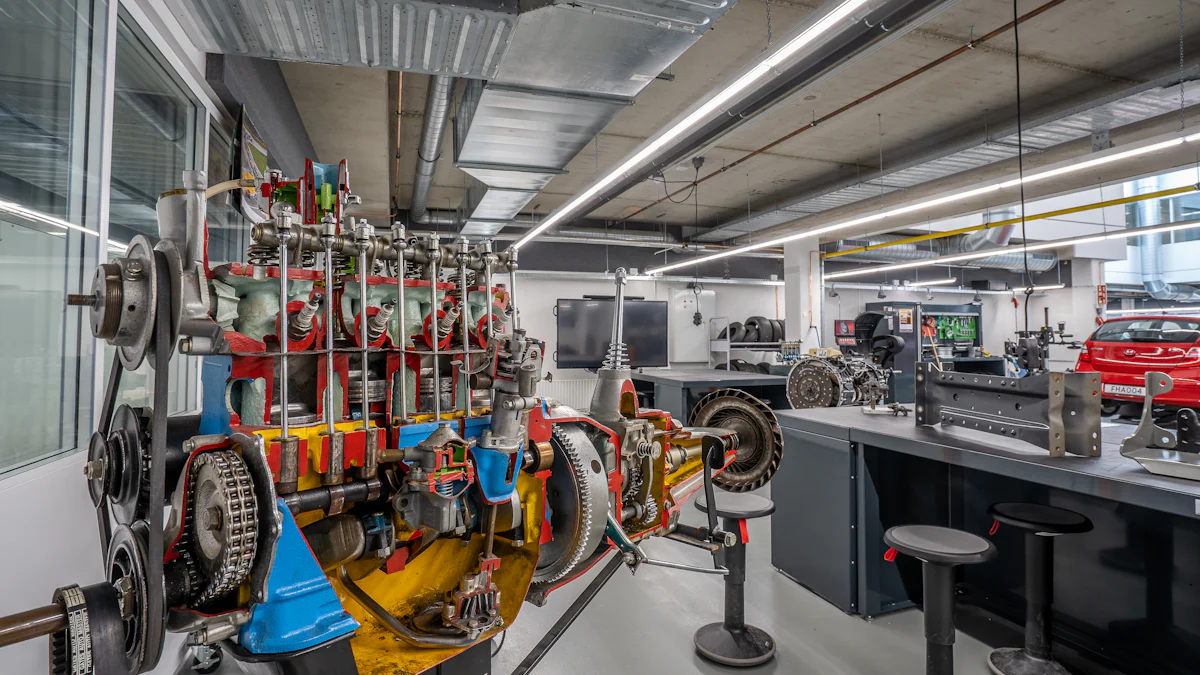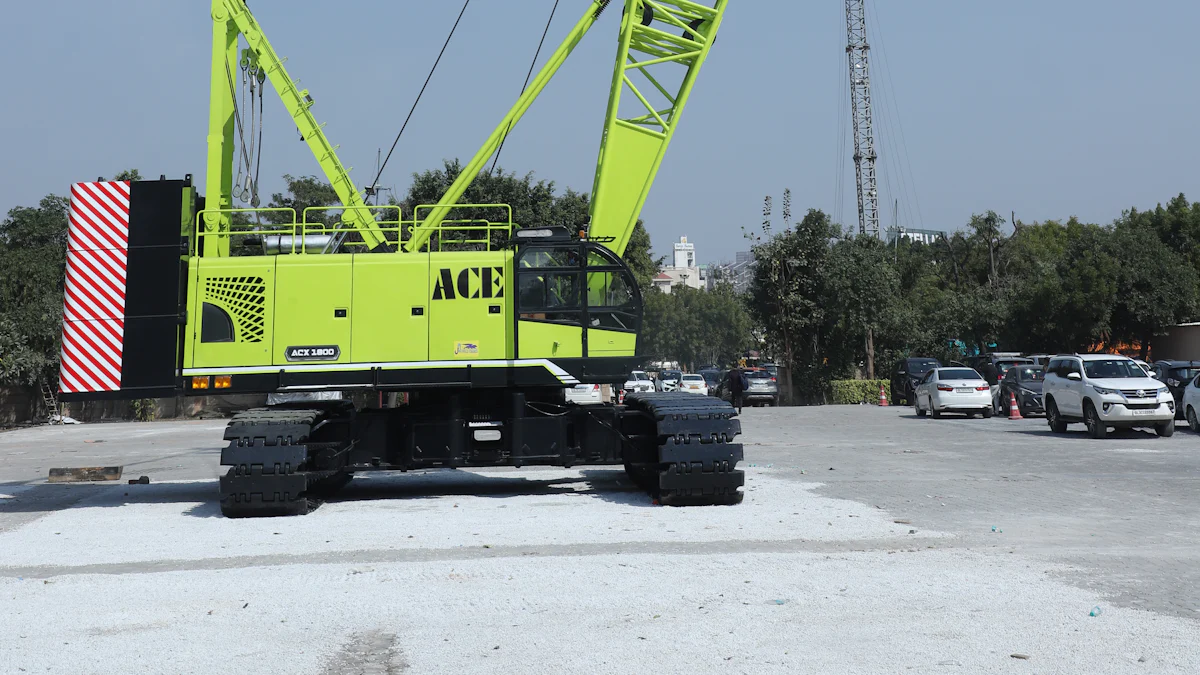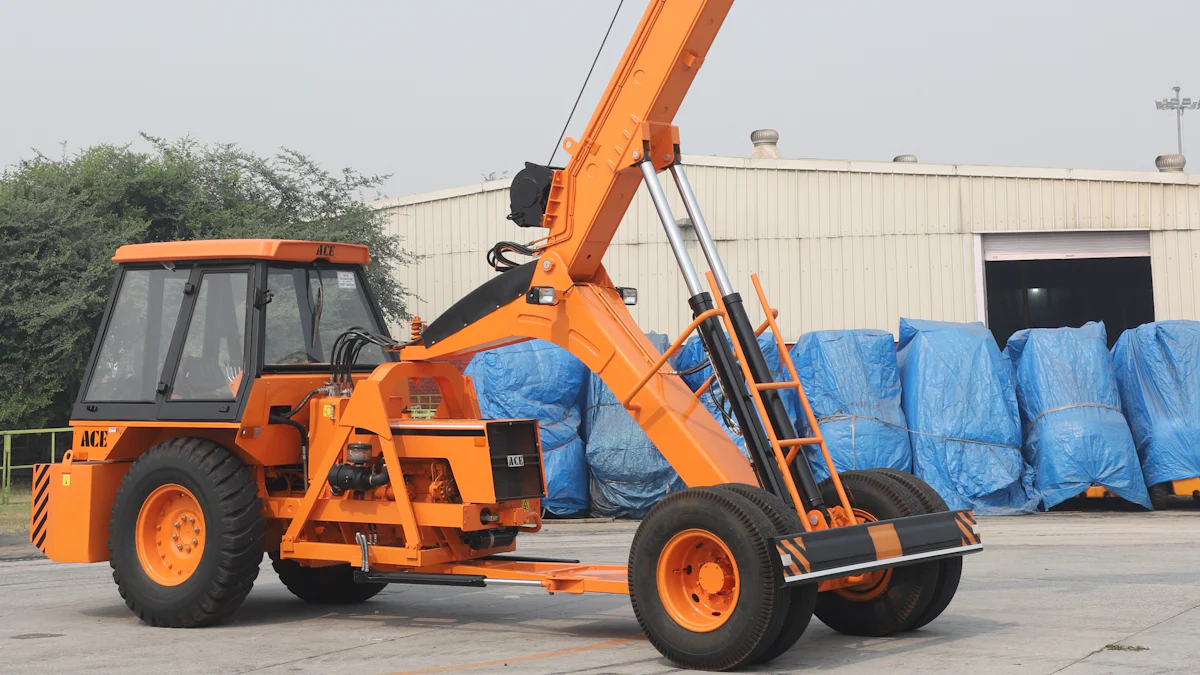
Injection molding relies on two primary systems: cold runner and hot runner. These systems differ in how they deliver molten material to the mold. Cold runner vs. hot runner systems highlight using unheated channels in cold runners, allowing the material to cool naturally. In contrast, hot runners maintain the material in a molten state through heated channels.
Overview of Hot Runner Systems

What is a Hot Runner System?
A hot runner system is a specialized component in injection molding that delivers molten plastic directly into the mold cavities. Unlike cold runner systems, it uses heated channels to maintain the material in a molten state throughout the process. This system eliminates the need for runners to cool and solidify, which reduces material waste. Manufacturers often integrate hot runner systems into molds for high-volume production due to their efficiency and precision.
Hot runner systems typically consist of two main components: the manifold and the nozzles. The manifold distributes the molten material evenly to the nozzles, which then inject it into the mold cavities. Advanced temperature control mechanisms ensure consistent flow and prevent material degradation. These systems are particularly suitable for complex designs and applications requiring high-quality finishes.
Advantages of Hot Runner Systems
Hot runner systems offer several advantages that make them a preferred choice for many manufacturers:
- Reduced Material Waste: By eliminating the need for solidified runners, hot runner systems minimize material waste. This feature is especially beneficial when working with expensive or specialized resins.
- Faster Cycle Times: The continuous flow of molten material allows for quicker injection and cooling cycles. This efficiency increases overall production speed.
- Improved Part Quality: Hot runner systems provide better control over material flow, resulting in uniform filling of mold cavities. This consistency reduces defects such as warping or sink marks.
- Enhanced Design Flexibility: These systems support intricate mold designs and allow for the production of parts with complex geometries.
- Cost Efficiency in High-Volume Production: Although the initial investment is higher, the long-term savings in material and time make hot runner systems cost-effective for large-scale manufacturing.
Disadvantages of Hot Runner Systems
Despite their benefits, hot runner systems also have some drawbacks that manufacturers must consider:
- High Initial Cost: The design, installation, and maintenance of hot runner systems require significant investment. This cost can be prohibitive for small-scale operations.
- Complex Maintenance: The system’s intricate components, such as heaters and temperature controllers, demand regular maintenance. Repairs can be time-consuming and costly.
- Material Sensitivity: Certain materials may degrade under prolonged exposure to heat. This limitation restricts the use of hot runner systems for some applications.
- Technical Expertise Required: Operating and maintaining hot runner systems require skilled personnel. Inadequate expertise can lead to operational inefficiencies or equipment damage.
Hot runner systems excel in scenarios where high production volumes and precision are critical. However, manufacturers must weigh the advantages against the potential challenges to determine their suitability for specific projects.
When to Use Hot Runner Systems
Hot runner systems prove highly effective in specific manufacturing scenarios. Their advantages align well with high-volume production, intricate part designs, and applications requiring minimal material waste. Manufacturers often choose hot runner systems when precision and efficiency are critical.
-
High-Volume Production
Hot runner systems excel in large-scale manufacturing environments. The reduced cycle times and minimal material waste significantly enhance productivity. Industries producing consumer goods, automotive components, or medical devices frequently rely on these systems to meet high demand. -
Complex Mold Designs
These systems support intricate mold geometries that cold runner systems may struggle to handle. Products with detailed features, thin walls, or multi-cavity molds benefit from the consistent material flow provided by hot runners. This capability ensures uniformity and reduces the likelihood of defects. -
Cost Efficiency Over Time
While the initial investment in hot runner systems is substantial, the long-term savings justify the expense. Reduced material waste and faster production cycles lower operational costs. This makes hot runners a cost-effective choice for projects with extended production runs. -
Applications Requiring High-Quality Finishes
Hot runner systems deliver superior surface finishes and dimensional accuracy. Industries like electronics and packaging, where aesthetics and precision matter, often prefer these systems. The ability to produce parts with minimal post-processing adds to their appeal. -
Material-Specific Requirements
Certain materials, such as engineering-grade plastics, perform better in hot runner systems. The controlled heating prevents premature cooling and ensures optimal flow. This feature makes hot runners suitable for applications demanding high-performance materials.
Manufacturers must evaluate their production needs, budget, and material requirements before selecting a system. Comparing the benefits of hot runner systems with those of cold runner systems helps identify the best fit for specific projects. Understanding the differences in cold runner vs. hot runner systems ensures informed decision-making.
Overview of Cold Runner Systems
What is a Cold Runner System?
A cold runner system is a fundamental component in injection molding that uses unheated channels to guide molten material into the mold cavities. Unlike hot runner systems, cold runners allow the material to cool and solidify within the runner channels before being ejected along with the molded part. This process requires trimming or separating the runner from the finished product, which adds an additional step to the production process.
Cold runner systems typically consist of a sprue, runners, and gates. The sprue connects the injection molding machine to the runner system, while the runners distribute the material to the gates, which direct it into the mold cavities. These systems are straightforward in design and operation, making them a popular choice for many manufacturers, especially those working with smaller production volumes or materials sensitive to prolonged heat exposure.
Advantages of Cold Runner Systems
Cold runner systems offer several benefits that make them suitable for specific manufacturing needs:
- Lower Initial Investment: The simplicity of cold runner molds reduces upfront costs. Manufacturers with limited budgets often prefer these systems due to their affordability.
- Material Versatility: Cold runner systems accommodate a wide range of materials, including those that degrade under heat. This flexibility makes them ideal for applications requiring diverse resin types.
- Ease of Maintenance: The absence of complex heating elements simplifies maintenance. Repairs and adjustments can be performed quickly, minimizing downtime.
- Shorter Setup Times: Cold runner molds require less preparation, enabling faster setup and changeover between production runs. This feature benefits manufacturers handling multiple small-scale projects.
- Energy Efficiency: Without the need for heating components, cold runner systems consume less energy. This efficiency reduces operational costs and aligns with sustainability goals.
Disadvantages of Cold Runner Systems
Despite their advantages, cold runner systems have limitations that manufacturers must consider:
- Increased Material Waste: The solidified runners generated during each cycle contribute to material waste. Although some materials can be recycled, this process adds time and cost.
- Longer Cycle Times: Cooling the material within the runner channels extends the overall cycle time. This limitation affects productivity, particularly in high-volume production environments.
- Additional Post-Processing: Separating the runner from the finished part requires extra steps, such as trimming or grinding. These processes increase labor costs and production time.
- Limited Design Flexibility: Cold runner systems may struggle with complex mold designs or intricate geometries. The lack of precise flow control can lead to defects like uneven filling or warping.
- Higher Part Costs for Large-Scale Production: The material waste and extended cycle times make cold runner systems less cost-effective for high-volume manufacturing. Over time, these factors can increase the overall cost per part.
Cold runner systems excel in scenarios where simplicity, material versatility, and lower initial costs are priorities. However, manufacturers must evaluate their production requirements and weigh the trade-offs to determine if this system aligns with their objectives. Comparing cold runner systems with hot runner systems provides valuable insights into selecting the most suitable option for specific applications.
When to Use Cold Runner Systems
Cold runner systems work best in specific manufacturing scenarios where simplicity, cost-effectiveness, and material versatility are essential. Manufacturers often choose these systems for projects that do not require high production volumes or intricate designs. Below are the key situations where cold runner systems prove advantageous:
-
Low to Medium Production Volumes
Cold runner systems suit operations with smaller production runs. The lower initial investment and reduced setup complexity make them ideal for businesses producing limited quantities of parts. This approach helps manufacturers manage costs effectively without compromising quality. -
Material-Sensitive Applications
Certain materials degrade when exposed to prolonged heat. Cold runner systems accommodate such materials by avoiding continuous heating. This feature makes them suitable for applications requiring resins that are sensitive to thermal conditions, ensuring material integrity throughout the process. -
Budget-Conscious Projects
Manufacturers with limited budgets often prefer cold runner systems due to their affordability. The straightforward design reduces upfront costs, making them a practical choice for startups or small-scale operations. These systems allow businesses to achieve reliable results without significant financial strain. -
Simpler Mold Designs
Cold runner systems handle basic mold geometries effectively. Products with straightforward shapes or minimal design complexity benefit from the system’s ease of operation. This capability ensures consistent results while minimizing the risk of defects. -
Sustainability Goals
Cold runner systems align with sustainability objectives by consuming less energy. Their lack of heating components reduces power usage, making them an environmentally friendly option. Manufacturers aiming to lower their carbon footprint often consider these systems for their operations. -
Frequent Mold Changes
The shorter setup times of cold runner systems support operations requiring frequent mold changes. This flexibility benefits manufacturers handling diverse product lines or custom orders. Quick transitions between molds enhance efficiency and reduce downtime.
Cold runner systems excel in scenarios prioritizing simplicity, material flexibility, and cost savings. Manufacturers must evaluate their production needs and compare the benefits of cold runner systems with those of hot runner systems. Understanding the distinctions in cold runner vs. hot runner systems ensures informed decision-making for optimal results.
Direct Comparison: Cold Runner Vs. Hot Runner

Cost Comparison
Cost plays a significant role in deciding between cold runner and hot runner systems. Cold runner systems require a lower initial investment due to their simpler design and absence of heating components. Manufacturers with limited budgets often find cold runners more accessible. However, the material waste generated by cold runners can increase long-term operational costs, especially in high-volume production.
Hot runner systems, on the other hand, demand a higher upfront cost. The inclusion of heated channels, temperature controllers, and advanced components contributes to this expense. Despite the initial investment, hot runners prove cost-effective over time for large-scale operations.
Material Compatibility
Material compatibility differs significantly between cold runner and hot runner systems. Cold runner systems accommodate a broader range of materials, including those sensitive to prolonged heat exposure. This flexibility makes them suitable for applications requiring diverse resin types. Manufacturers working with biodegradable or heat-sensitive materials often rely on cold runners to maintain material integrity.
Hot runner systems excel with materials that benefit from consistent heating. Engineering-grade plastics and resins requiring precise flow control perform better in hot runners. However, materials prone to thermal degradation may not be suitable for these systems. Manufacturers must carefully evaluate material properties to ensure compatibility with the chosen system.
Product Applications
The choice between cold runner and hot runner systems impacts product applications. Cold runner systems work well for simpler designs and smaller production volumes. Industries producing basic components or handling custom orders often prefer cold runners. Their ability to support frequent mold changes and diverse materials enhances their versatility.
Hot runner systems cater to high-volume production and intricate designs. Industries such as automotive, electronics, and packaging benefit from the precision and efficiency of hot runners. These systems enable the creation of complex geometries and high-quality finishes, meeting the demands of advanced manufacturing processes.
Understanding the differences in cold runner vs. hot runner systems helps manufacturers align their production goals with the right technology. Each system offers unique advantages tailored to specific needs, ensuring optimal results for diverse applications.
Environmental Impact
The environmental impact of cold runner and hot runner systems varies significantly, influencing their suitability for sustainable manufacturing practices. Each system presents unique advantages and challenges in terms of material waste, energy consumption, and recyclability.
Cold runner systems generate more material waste due to the solidified runners produced during each cycle. Manufacturers often need to trim and discard these runners, which increases the volume of plastic waste. Although some materials can be recycled, the recycling process requires additional energy and resources, which may offset its environmental benefits. Cold runners, however, consume less energy during operation because they lack heating components. This energy efficiency aligns with sustainability goals, particularly for manufacturers aiming to reduce their carbon footprint.
Hot runner systems minimize material waste by eliminating the need for solidified runners. However, the continuous heating required to maintain molten material increases energy consumption. This higher energy demand can contribute to a larger carbon footprint, especially in facilities relying on non-renewable energy sources. Additionally, the complexity of hot runner components may pose challenges for recycling at the end of their lifecycle.
Manufacturers must evaluate their environmental priorities when choosing between cold runner and hot runner systems. Cold runners offer energy efficiency but generate more waste, while hot runners reduce waste but consume more energy. Understanding these trade-offs helps businesses align their production processes with their sustainability objectives. The choice between cold runner and hot runner systems plays a crucial role in balancing operational efficiency with environmental responsibility.
Both cold runner and hot runner systems offer distinct advantages, making them suitable for different manufacturing needs. Hot runners excel in high-volume production and intricate designs, delivering efficiency and precision. Cold runners, however, provide flexibility for smaller-scale projects and materials sensitive to heat. Manufacturers must evaluate factors such as budget, production volume, material properties, and environmental impact. This assessment ensures the selection of the most effective system. Understanding the differences in cold runner vs. hot runner systems helps businesses align their production goals with the right technology.
FAQ
What is the main difference between cold runner and hot runner systems?
The primary difference lies in how they handle material delivery. Cold runner systems use unheated channels, allowing the material to cool and solidify before being ejected. Hot runner systems, however, maintain the material in a molten state through heated channels, eliminating the need for solidified runners.
Which system is more cost-effective for small-scale production?
Cold runner systems are more cost-effective for small-scale production. Their simpler design and lower initial investment make them ideal for manufacturers with limited budgets or smaller production volumes.
Do hot runner systems produce less material waste?
Yes, hot runner systems significantly reduce material waste. By eliminating solidified runners, they minimize discarded plastic, making them a more efficient option for high-volume production.
Can cold runner systems handle heat-sensitive materials?
Cold runner systems are better suited for heat-sensitive materials. They avoid prolonged exposure to heat, preserving the integrity of resins that may degrade under high temperatures.
Which system offers faster cycle times?
Hot runner systems provide faster cycle times. The continuous flow of molten material reduces cooling and injection durations, enhancing overall production speed.
Are cold runner systems easier to maintain?
Cold runner systems require less maintenance.
What types of products benefit from hot runner systems?
Hot runner systems excel in producing intricate designs and high-quality finishes. Industries such as automotive, electronics, and packaging often rely on these systems for complex geometries and precision manufacturing.
How does each system impact environmental sustainability?
Cold runner systems consume less energy, aligning with sustainability goals. However, they generate more material waste due to solidified runners. Hot runner systems reduce waste but require higher energy consumption to maintain molten material.
Can both systems be used for multi-cavity molds?
Yes, both systems can support multi-cavity molds.
How should manufacturers choose between the two systems?
Manufacturers should evaluate production volume, material requirements, budget, and environmental priorities.
